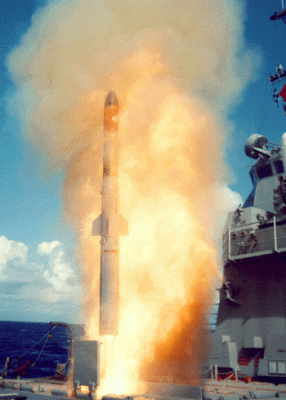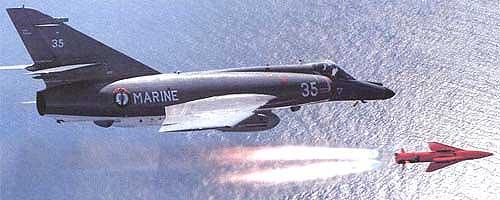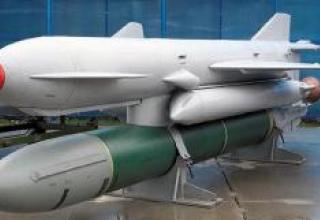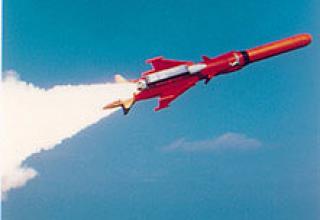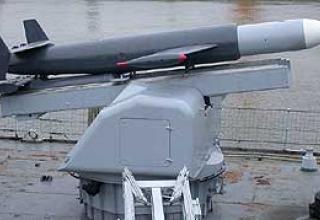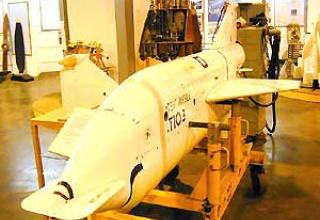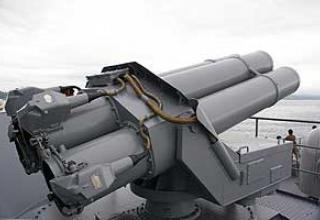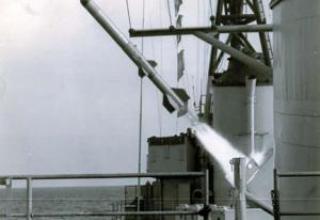The Asroc-VLA all-weather anti-submarine missile system, designed to be launched from Mk41 type universal vertical launchers, is an upgraded version of the widely used Asroc system for similar purposes.
The modernization focused on reducing reaction time, integrating with modern fire control systems, and improving the combat efficiency of the system.
"Asroc-VLA is installed on Ticonderoga class cruisers, Arleigh Burke destroyers and other surface ships equipped with Mk41 PU.
Composition:
The Asroc-VLA anti-submarine missile consists of a combat unit in the form of a small-size anti-submarine torpedo and a solid-fuel rocket motor tandem behind it, connected by an adapter, in which there are time relays controlling the shutdown and separation of the engine compartment, and a brake parachute. To ensure flight stabilization, the missile is equipped with stabilizers located on an adapter.
The solid propellant rocket engine is equipped with a thrust vector control system to bring the missile out of its vertical position after launch on a ballistic trajectory that provides hitting a given aiming point on the sea surface. After launch, the missile is autonomous and its trajectory from the carrier is not corrected. The firing range is determined by the burning time of the solid propellant charge of the marching engine, which is entered into the time relay before launch. At the calculated point of the trajectory the marching engine is separated and the parachute is opened to provide braking and BC drive. When entering the water, the parachute is separated and the engine is started by a torpedo, which starts searching for a target.
Depending on the type of combat unit, the following missile modifications are known:
The complex is controlled by the automated fire control system, which includes the system of underwater target designation and control (UFCS) - Mk 116 MoS 6 (or 7), which provides data reception from the ship hydroacoustic station AN/SQS-53B (main channel) or from the towed sonar station AN/SQR-19, data processor AN/SQQ-28 for receiving information from the radio hydroacoustic buoys and transmitted through anti-submarine helicopters of the LAMPS system.
AN/SQS-53B and AN/SQR-19 provide target detection, classification, and containment (position and movement). Target location information with environmental data (wind speed and direction, relative humidity, etc.) is used by UFCS to calculate the aiming point.
The missile passes all necessary checks and maintenance at the bases, is delivered in a transport and launch container to warships and does not require any further routine work.
Characteristics:
| Range of fire maximum , m | 14000 |
| Range of fire minimum , m | 900 |
| The length of the rocket, m | 4.85 |
| Rocket body diameter, m | 0.422 |
| Wingspan, m | 0.683 |
| Starter weight, kg | 633.15 |
| Flight Speed, m/s | Supersonic |
Testing:
During Operation Desert Storm in 1991, French Jaguar aircraft used AS-30L, which was normally launched from the aircraft during a 1.3 km dive (2.2 km entry altitude). A container with Atlis-2 target designation system was used for laser illumination of targets, suspended on a sub-basement pylon. A video was shown to the press depicting the AS-30L missile hitting a fortified ammunition depot, flying into its premises through the right gate door. In total, about 60 missiles were fired during this operation, the number of hits was 97% (according to other data 80%). According to French pilots in the Middle East theatre of war, they began to record ground targets at a distance of 16-20 km using the television system of the upgraded Atlis-2 container.
During NATO's air aggression against Yugoslavia in 1999, French Super Etendart fighter jets struck targets in Serbia (mainly in the western and southwestern parts of the country), attacking army and paramilitary police units while providing advanced aircraft pointers (AFAC), whose functions were taken over by American tactical F-16C fighters. The combat missions were conducted by pairs of aircraft - one aimed at the target using the Atlis-2 laser system, while the other struck by AS-30L missiles or laser-guided 500-pound GBU-12 bombs.
Sources:
- К.Сергеев "Противолодочные ракетные комплексы" , Зарубежное военное обозрение N7, 1989 год
